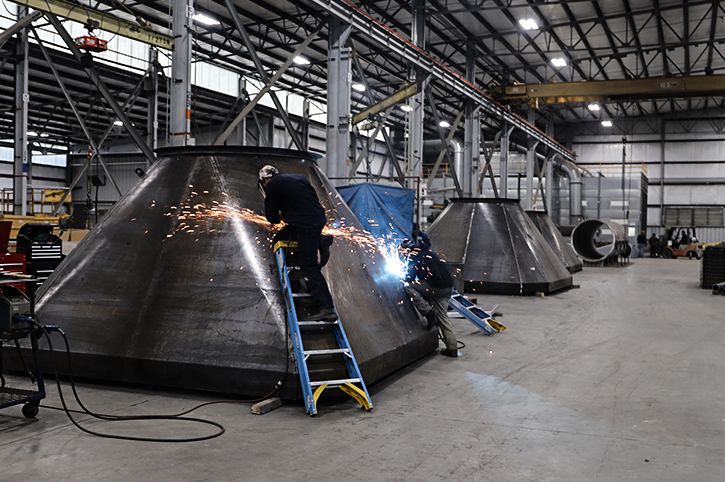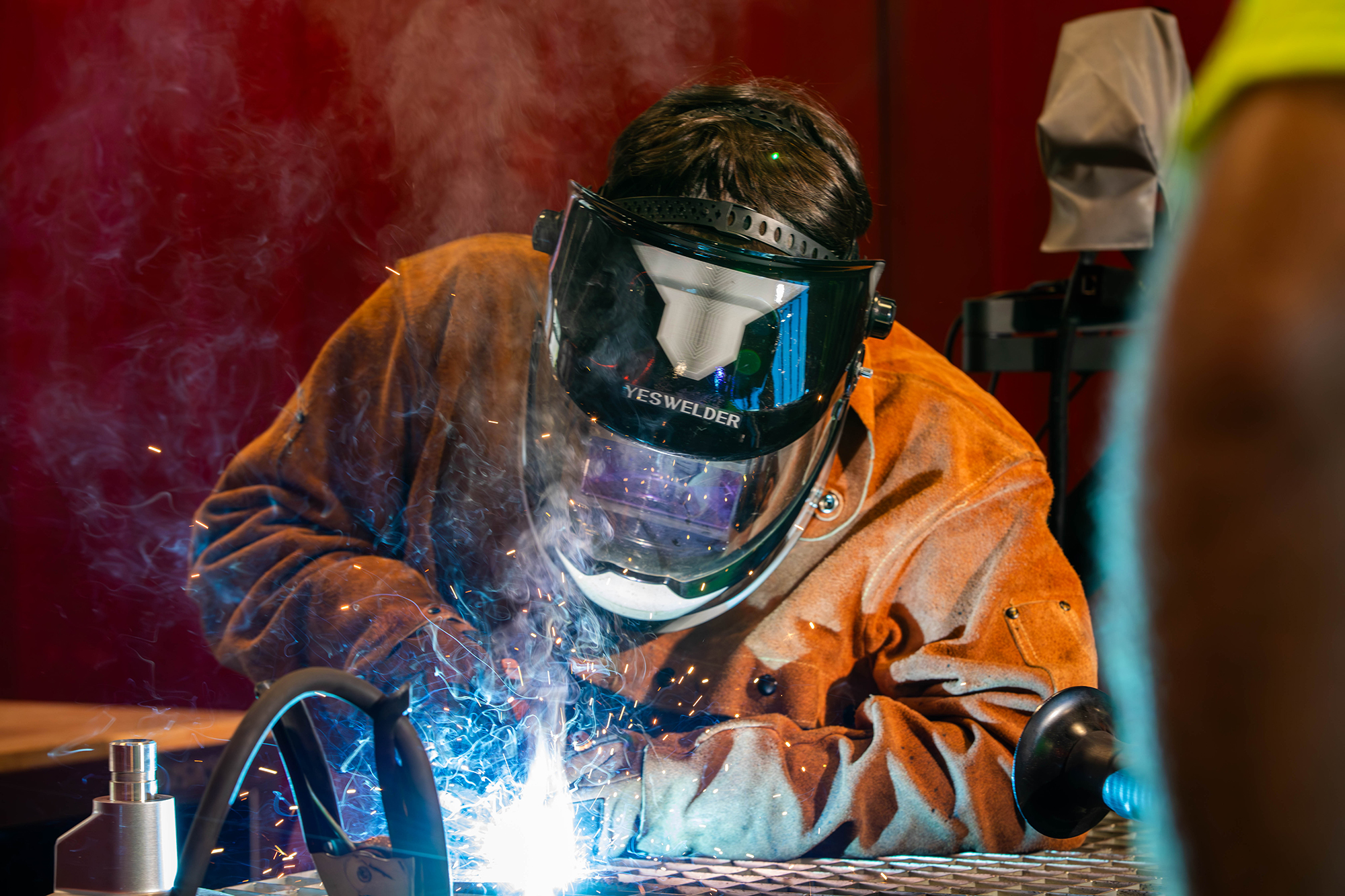All Concerning Welding: Trick Insights Into Techniques and Ideal Practices for Success
Welding incorporates a selection of strategies, each suited for certain materials and applications. Comprehending these techniques, such as GMAW, SMAW, and TIG, is crucial for accomplishing suitable outcomes. The right equipment and safety and security techniques can not be ignored. As preparation and troubleshooting play essential duties in the welding procedure, understanding these components can significantly enhance the top quality of the last product. What are the crucial factors that assure a successful weld?
Understanding Various Welding Methods
Welding techniques incorporate a range of methods, each matched to certain applications and materials. Amongst one of the most typical techniques are Gas Steel Arc Welding (GMAW), Protected Metal Arc Welding (SMAW), and Tungsten Inert Gas Welding (TIG) GMAW, also referred to as MIG welding, is popular for its speed and convenience, making it excellent for thin products. SMAW, or stick welding, is favored for its simplicity and effectiveness in outside settings, especially with thicker steels. TIG welding provides accuracy and control, making it ideal for detailed work and non-ferrous metals (Belgrade). Each strategy has its unique benefits and factors to consider, allowing welders to select the very best approach based on the project's needs, product kind, and preferred results. Understanding these techniques is vital for effective welding
Crucial Welding Equipment and Tools
While various welding techniques require details abilities, the right equipment and tools are similarly essential for achieving high quality outcomes. Vital welding devices consists of welding equipments, which differ depending upon the method-- such as MIG, TIG, or stick welding. Safety gear, consisting of gloves, helmets, and aprons, guarantees safety and comfort throughout the procedure. On top of that, components and clamps help safeguard products in place, making sure accuracy in welds. Consumables like welding rods, cord, and protecting gas are also vital parts that influence the top quality of the weld. Additionally, tools such as cutters and grinders facilitate surface area prep work and post-weld ending up, adding to a professional end result. Buying top notch equipment ultimately boosts the effectiveness and performance of welding projects.
Safety And Security Practices in Welding
Proper safety and security practices are vital in the welding market to protect workers from possible threats. Welders should wear proper personal safety equipment (PPE), including headgears with appropriate shading, handwear covers, and flame-resistant garments. Appropriate ventilation is crucial to reduce exposure to damaging fumes and gases created throughout the welding process. Furthermore, employees need to be trained in the proper handling of welding equipment to stop crashes. Fire security measures, such as keeping flammable materials far from the welding area and having fire extinguishers conveniently offered, are essential. Regular examinations of equipment and work spaces can help determine possible threats prior to they cause crashes. By adhering to these safety and security practices, welders can produce a much safer working environment and decrease threats related to their profession.
Readying Products for Welding
Preparing products for welding is a vital action that considerably affects the top quality and honesty of the end product (Belgrade). Correct preparation entails cleansing the surface areas to get rid of impurities such as dust, corrosion, and oil, which can endanger the weld. Techniques such as grinding, sanding, or utilizing solvents are commonly utilized to accomplish a tidy surface area. Furthermore, ensuring that the materials fit together comfortably is important; voids can cause weak welds. It's additionally essential to take into consideration the placement and positioning of the parts, as this will certainly impact the convenience of welding and the last end result. Selecting the ideal filler material and ensuring compatibility with the base steels is necessary for attaining strong, resilient welds.
Tips for Achieving High-Quality Welds
Accomplishing top quality welds calls for interest to information and adherence to best practices throughout the welding procedure. Correct joint preparation is important, ensuring surfaces are cost-free and clean from pollutants. Selecting the suitable filler material and welding technique based upon the base metals is vital for suitable bonding. Keeping constant traveling speed and angle while welding can stop flaws and advertise harmony. Furthermore, controlling warmth input is vital; extreme warmth can lead to bending and damaged joints. If required, on a regular basis examining the welds during the procedure permits for prompt adjustments. Finally, employing appropriate post-weld treatments, such as cleaning and tension relief, can enhance the toughness and honesty of the weld, inevitably guaranteeing a successful outcome.
Repairing Common Welding Issues
Welding frequently presents difficulties that can affect the top quality and stability of the end product. Typical issues such as porosity, inconsistent weld grains, and overheating can arise, each requiring certain fixing techniques. Understanding these troubles is vital for welders to improve their skills and accomplish optimal outcomes.
Porosity Problems Explained
Porosity can often be forgotten, it continues to be a crucial concern in welding that can compromise the stability of a finished product. Porosity describes the visibility of little gas pockets within the weld grain, which can lead and deteriorate the joint to early failure. This trouble normally develops from contaminants, dampness, or improper securing gas coverage during the welding procedure. To alleviate porosity, welders should verify that the base products are dry and clean, utilize suitable securing gases, and maintain consistent welding specifications. Consistently inspecting the devices and environment can also help recognize potential issues before they materialize in the weld. Attending to porosity effectively is essential for accomplishing solid, sturdy welds that meet quality standards.

Irregular Weld Beans
Irregular weld grains can considerably impact the quality and strength of a completed product. Various variables add to this issue, including improper traveling rate, incorrect amperage settings, and inconsistent electrode angles. When the welder moves also swiftly, a bead might show up narrow and lack penetration, while moving as well slowly can create excessive buildup. Additionally, using the wrong amperage can cause either damaging or too much spatter, both look at more info of which compromise weld stability. The welder's method, such as inconsistent lantern motion, can also bring about uneven grain appearance. To reduce these troubles, welders need to concentrate on keeping stable, regulated activities and making sure correct equipment settings to accomplish harmony in their welds. Uniformity is key to attaining reliable and solid welds.
Getting Too Hot and Warping Issues
Too much heat during the welding procedure can bring about considerable overheating and deforming problems, affecting the structural integrity of the workpiece. These troubles commonly materialize as distortion, which can jeopardize positioning and fit-up, making additional setting up testing. Aspects adding to overheating consist of the selection of welding parameters, such as voltage and take a trip speed, in addition to the type of material being welded. To alleviate these issues, welders need to keep constant travel speed and appropriate warmth input while monitoring the work surface temperature. Furthermore, pre-heating or post-weld warmth therapy can aid alleviate stress and anxieties brought on by quick cooling - Montana Mobile Welding and Repair Belgrade Fabrication. Normal examination and adherence to best techniques are crucial in protecting against getting too hot and making sure the longevity and dependability of bonded frameworks
Often Asked Concerns
What Are the Career Opportunities in the Welding Industry?
The welding market supplies diverse occupation opportunities, consisting of settings as welders, designers, examiners, and educators. Professionals can operate in manufacturing, construction, aerospace, and automobile sectors, profiting from solid demand and competitive incomes in numerous duties.
Exactly How Can I Improve My Welding Rate Without Sacrificing High Quality?
To boost welding speed without compromising quality, one must practice reliable techniques, keep devices, maximize settings, and improve hand-eye control. Regular link training and looking for comments can additionally significantly add to accomplishing faster, high-quality welds.
What Accreditations Are Available for Welders?
Many accreditations exist for welders, consisting of those from the American Welding Culture (AWS), the National Facility for Building And Construction Education and Research Study (NCCER), and various industry-specific companies. These qualifications improve employability and show ability proficiency.
Just How Does Welding Impact the Characteristics of Metals?
Welding affects the properties of steels by altering their microstructure, which can result in changes in hardness, ductility, and strength. Heat input and cooling prices throughout the procedure considerably impact these material attributes.
Can I Bonded Dissimilar Metals With Each Other?
